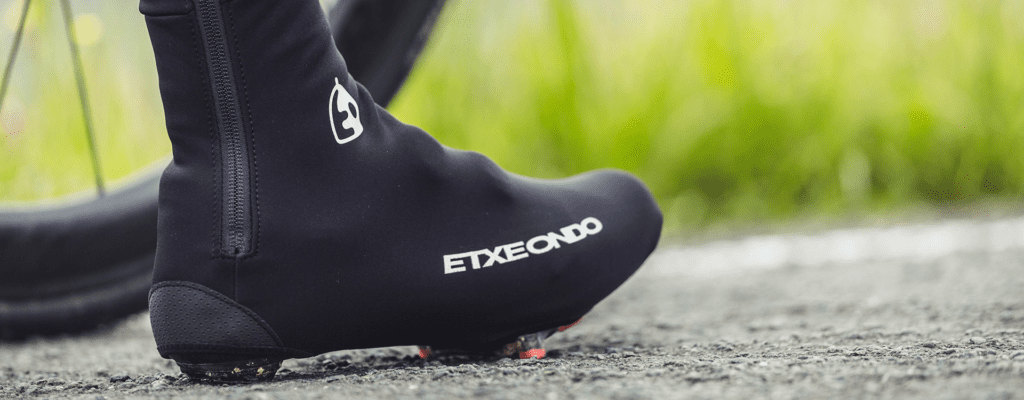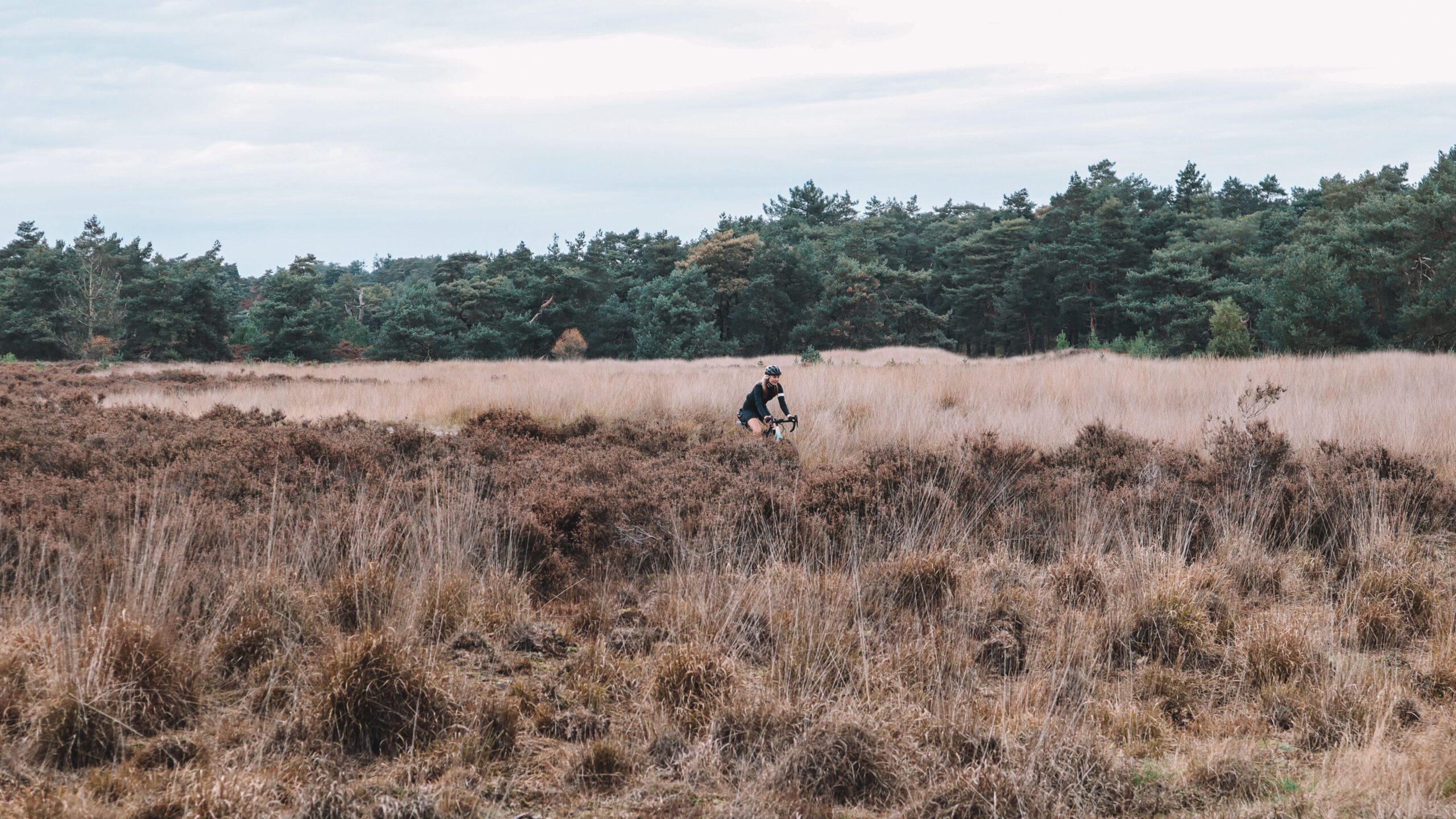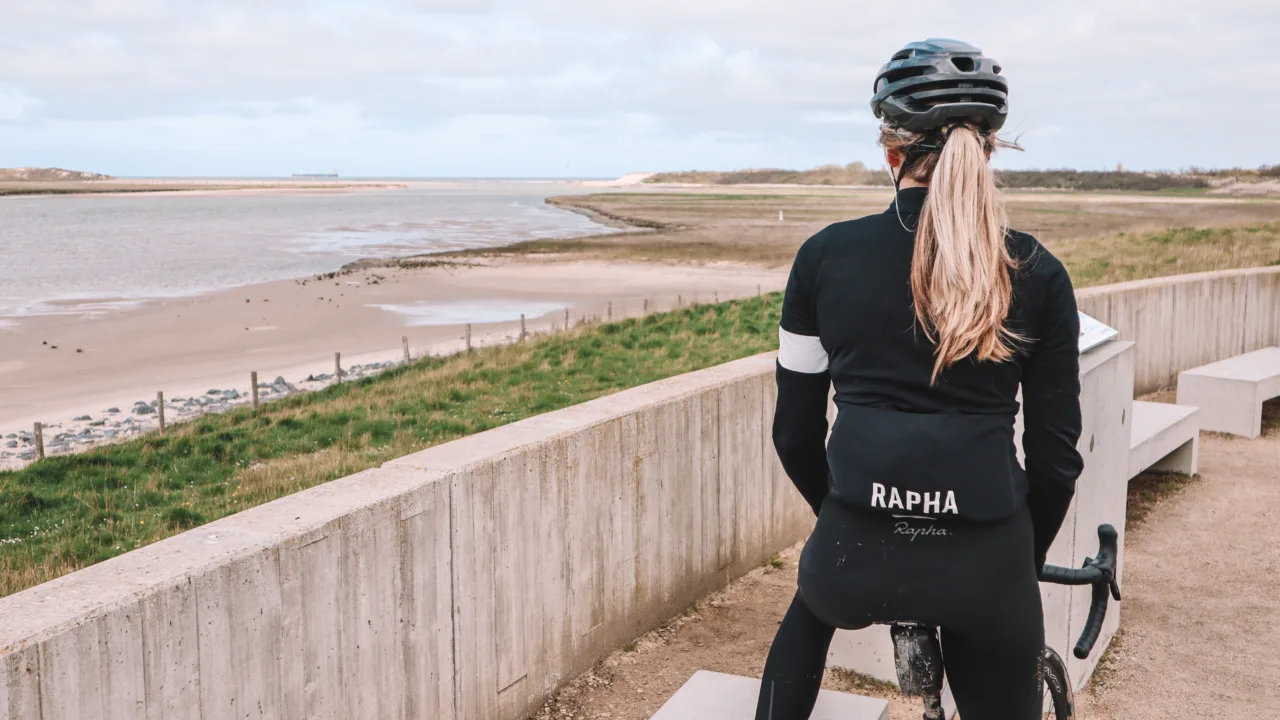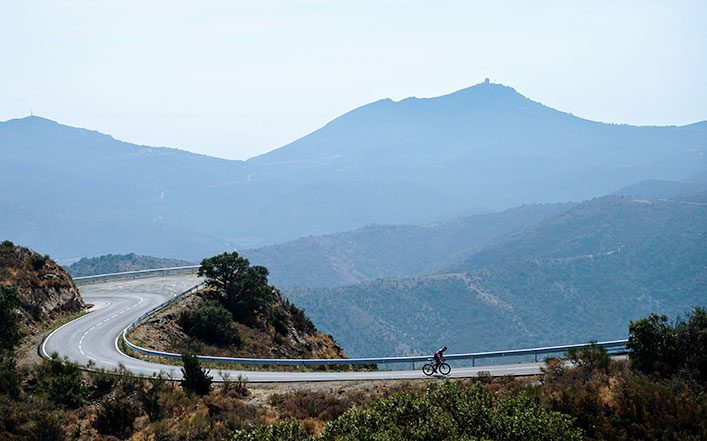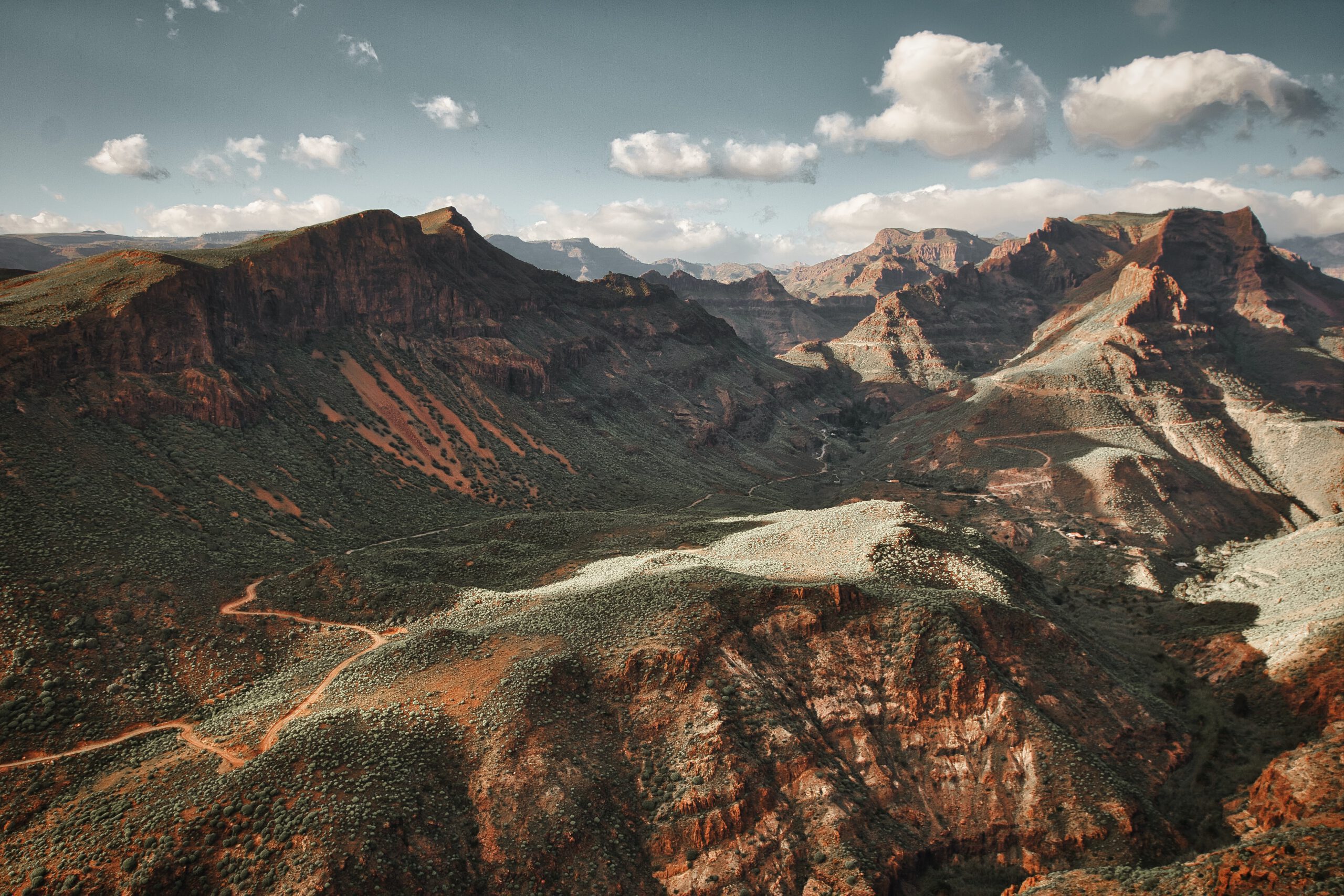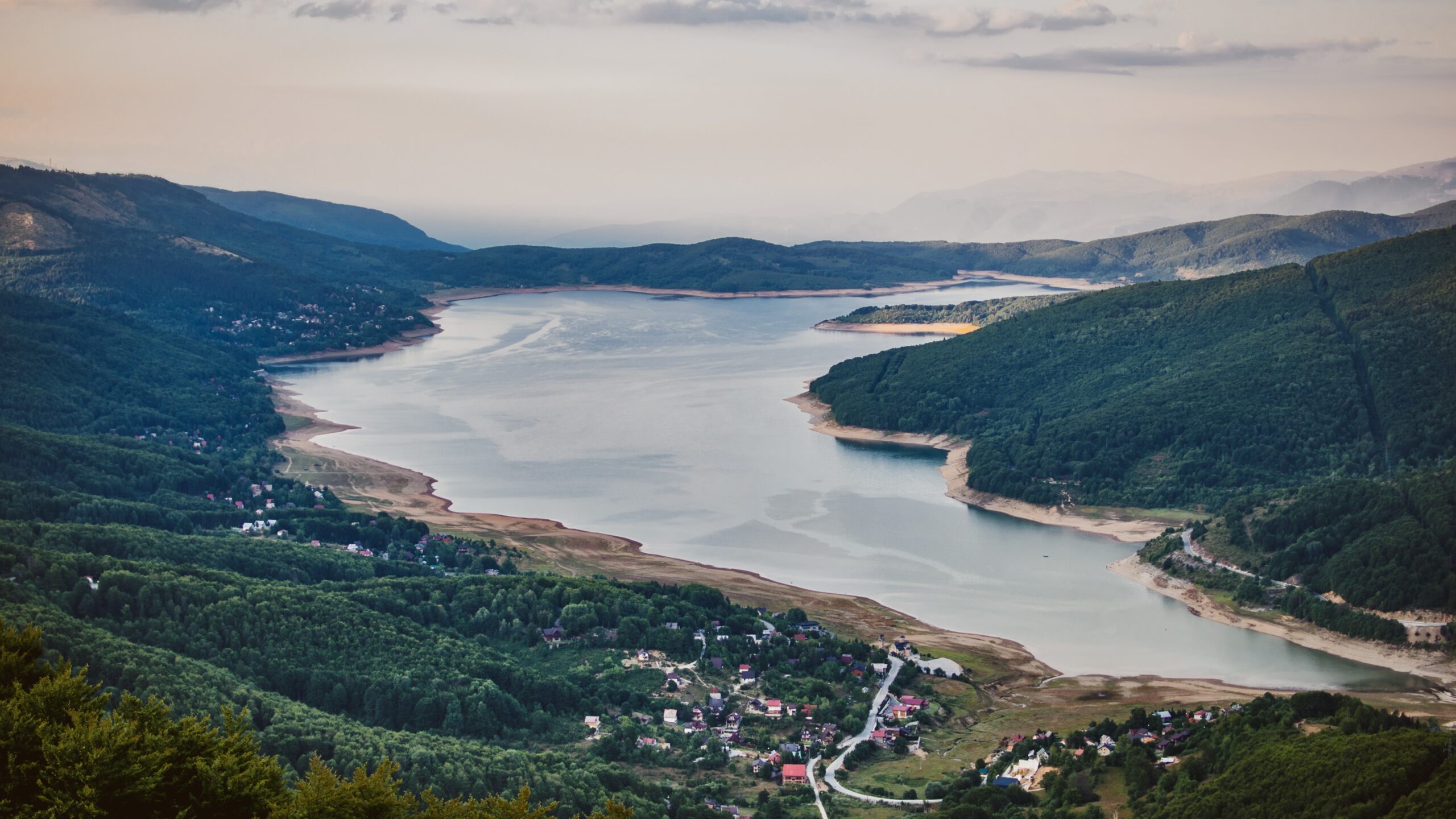When temperatures head towards the 'single digits', you know enough: winter is on its way. For many, the time to put the bike away or to secretly look for a nice winter destination, such as Tenerife. For those who want to keep on cycling nicely, we have a nice Winter Cycling Clothing Guide. Because one thing is for sure, you can't go out without a jacket when it's winter. We have divided the guide into outerwear and undergarments and give you guidelines for when you could put on what. Because fair is fair: clothes are still personal.
Disclaimer
This guide is suitable for autumn and winter, when the temperature is below 10 degrees, or when it falls below that according to the wind chill. We naturally use examples from our partner Etxeondo. In this guide, you will also find your own tips and experiences. After all, we don't need a product guide to know what we would like to wear when. Do you have any questions or additions? Drop them in the comments or send us a message.
Underwear
We used to wear a nice wool shirt, but nowadays there are high-quality undershirts that wick away moisture and always keep you warm. When it is cold in winter, we always wear a long-sleeved thermal shirt. You sometimes have thinner shirts, but generally I, Sander, wear a slightly thicker shirt. Then you're always comfortable. The baselayer Iluna from Etxeondo comes in the colour black. With this, you'll actually be fine all winter. The technical fabric protects you in temperatures from -5 to 12 degrees. Nothing more to wear. I personally like it when the back can also cover your bottom when standing up. Otherwise you get such a cold back.
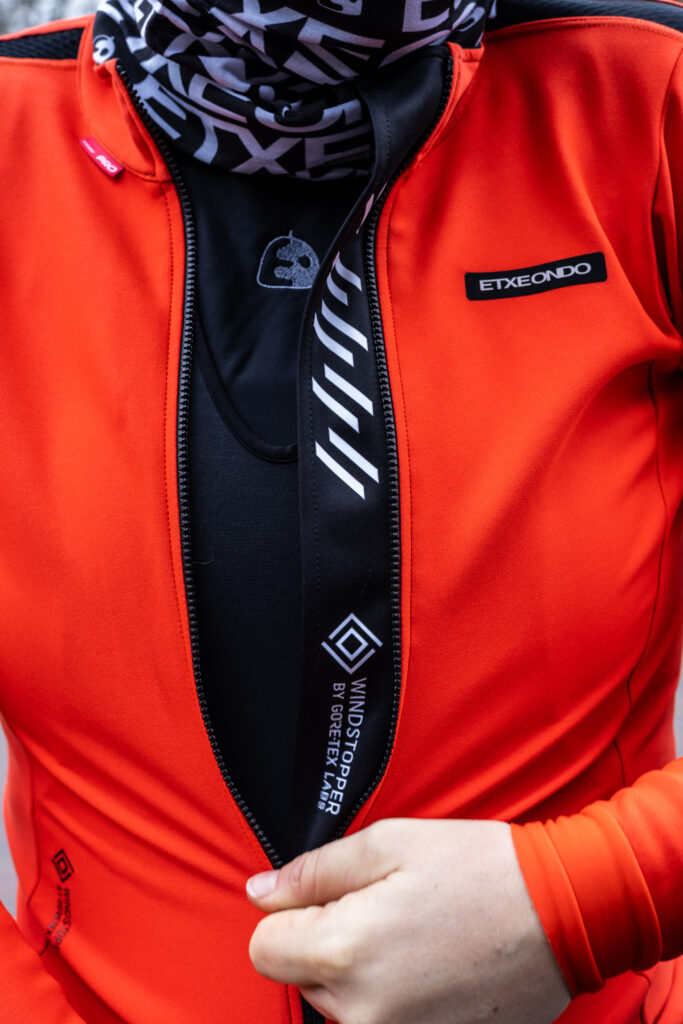
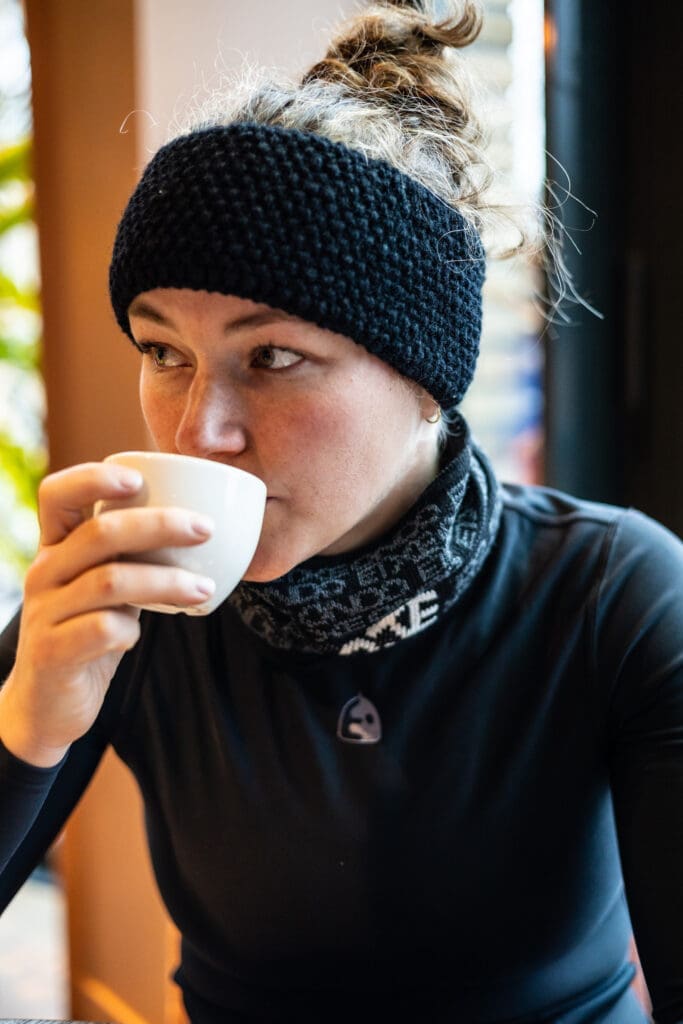
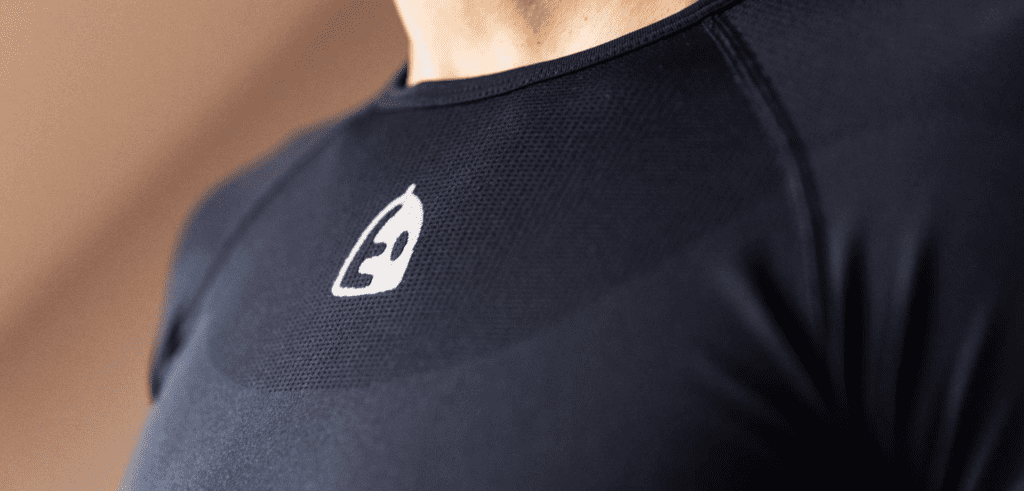
Short or long undershirt
There are always people who prefer cycling with short-sleeved undershirts. They can. I have to say that, especially in temperatures towards zero degrees, I don't like that at all. If you do want to ride with short sleeves, then Etxeondo's Epela baselayer is good enough to keep you warm above five degrees. Light, technically high-quality and nice and tight fitting. I wouldn't recommend sleeveless to anyone, but well, that's also a personal choice.
Trousers
This guide is written in the order of getting dressed. At least, the way I, Sander, usually get dressed. So that's shirt first, then trousers, then the rest. In winter I rode for times with just leg warmers and summer shorts. That was OK during the ride, but afterwards I had red spots from the cold. Not the best. That's why in winter I always ride with nice warm, padded long trousers. My weapon of choice? The Orhi long trousers. In terms of fit, chamois and lining, these are the finest trousers available. It is a bit of an investment, but you will not regret this. From -2 to 14 degrees you will enjoy this. If you have a slightly lower budget, you can also go for the KOM bib tights go. For long rides, the Exo Thermodry from the Endurance collection is a nice one.
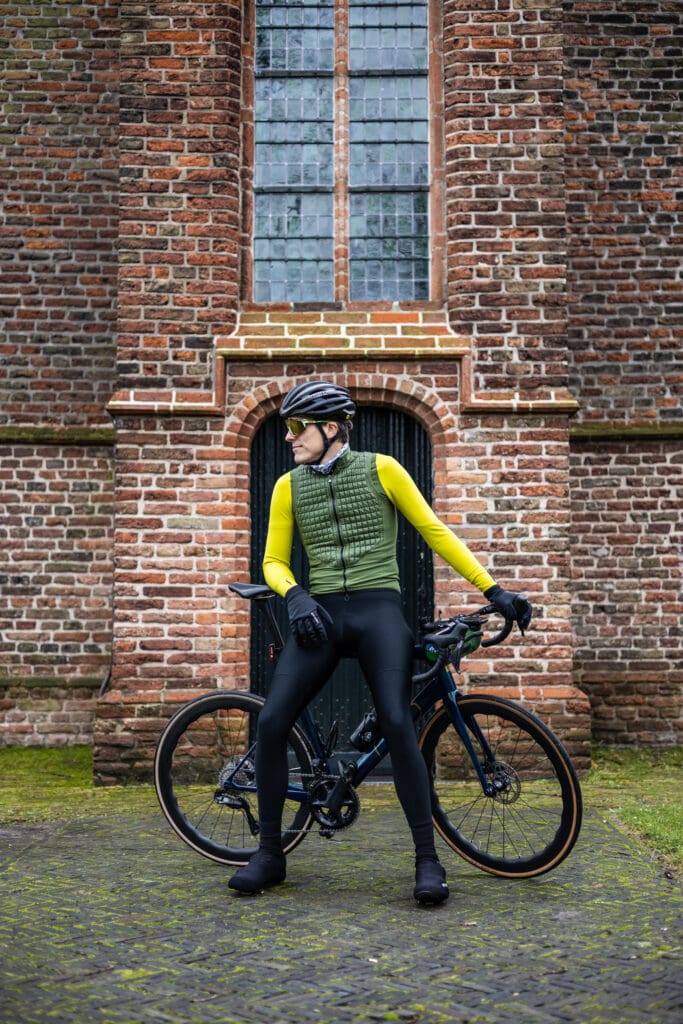
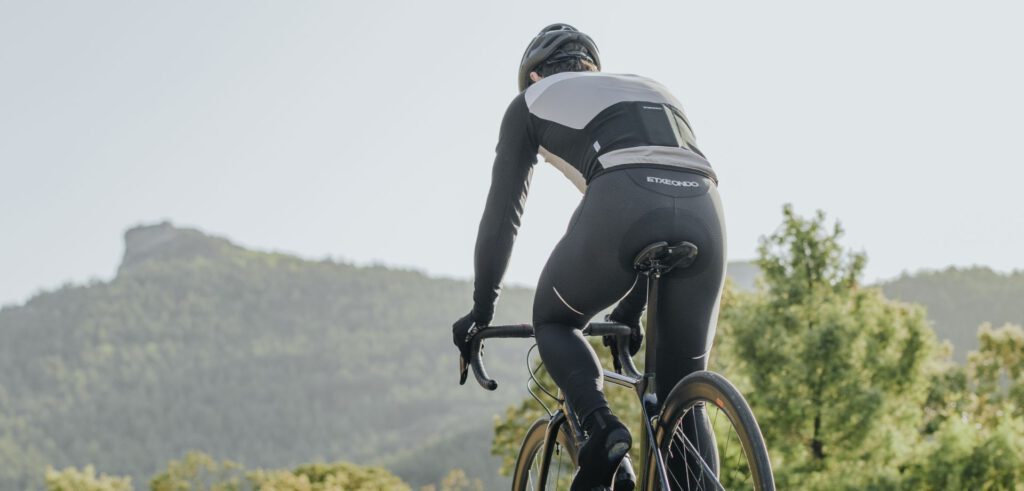
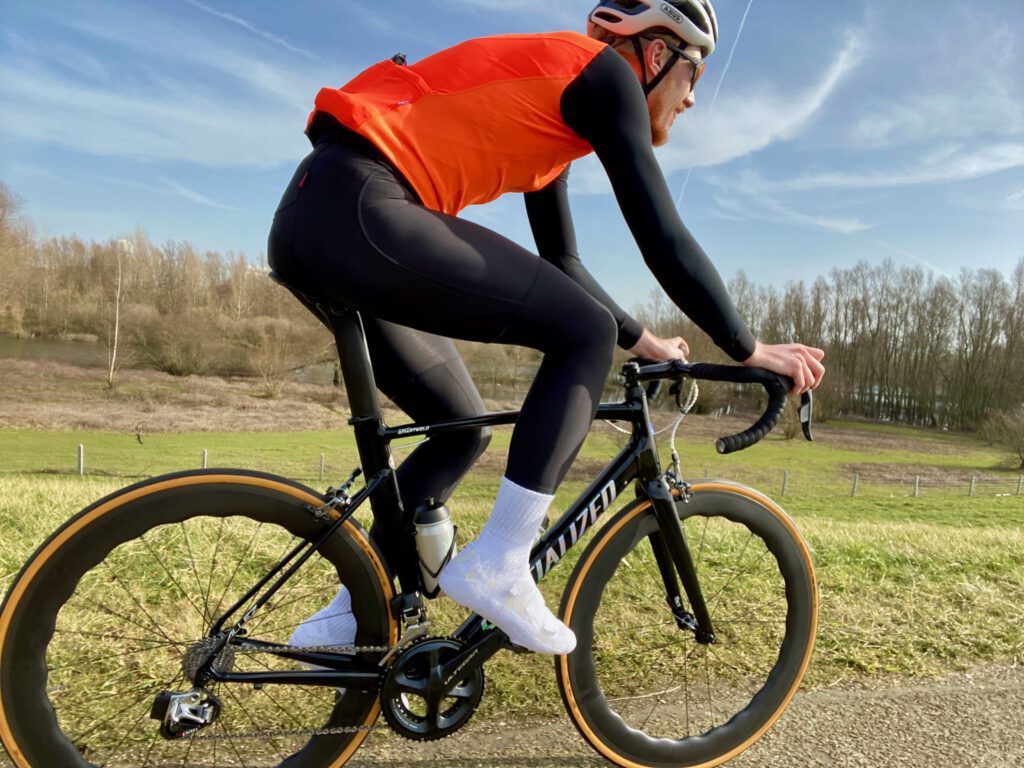
Outerwear
So far, it's been pretty uncluttered. Trousers, undershirt. little to do. In terms of outerwear, the choice becomes a bit wider. With that, personal preference and variation also increases. After all, do you ride with an extra shirt under your jacket? Do you ride with a long-sleeved shirt and then a vest? Or do you ride with an exztra thick jacket and then just a thermo? That's really a personal preference.
Jacks
When it's colder, you actually always want a jacket on. I myself ride with Etxeondo's 76 jacket and you can actually always use it. The indication temperature is from -2 to +12 degrees, which means you can wear it almost all winter. If it gets really colder than -2 you can consider wearing an extra rain/wind jacket or an extra shirt (a regular shirt). The 76 also has fabric with a windstopper, which is certainly no luxury in the Netherlands.
If temperatures are a little higher, the Arri jacket is a good alternative. Actually, it is meant for temperatures of +6 to +18. Although above 15 degrees with me, no jacket really comes out of the closet anymore. An important consideration in choosing the Arri instead of the 76 is the chance of rain. When it rains, the Arri fills up. You don't want that.
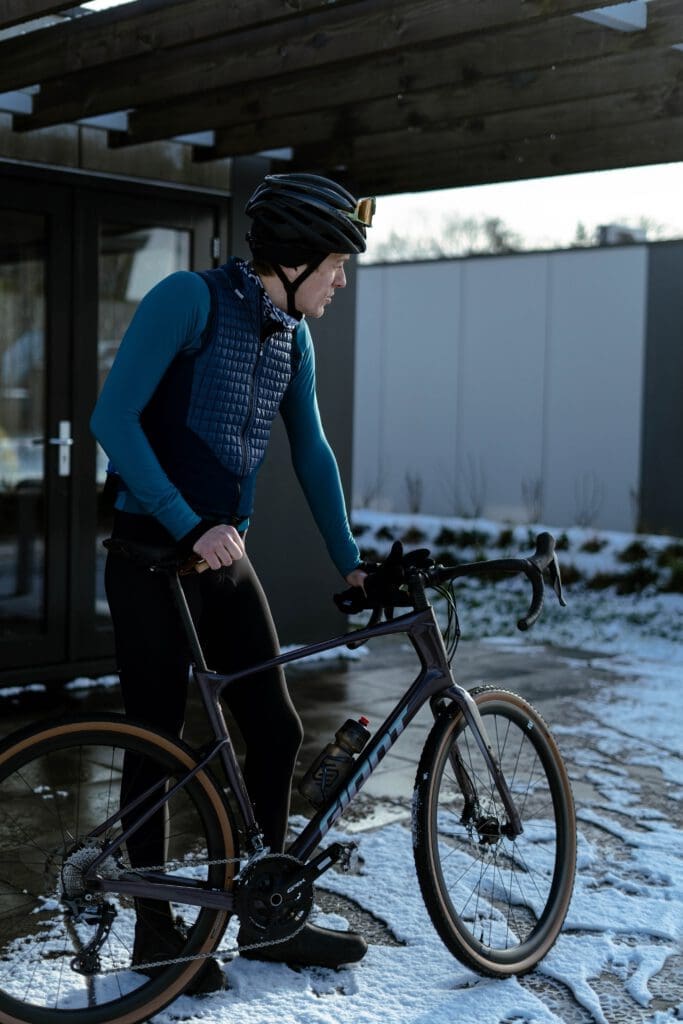
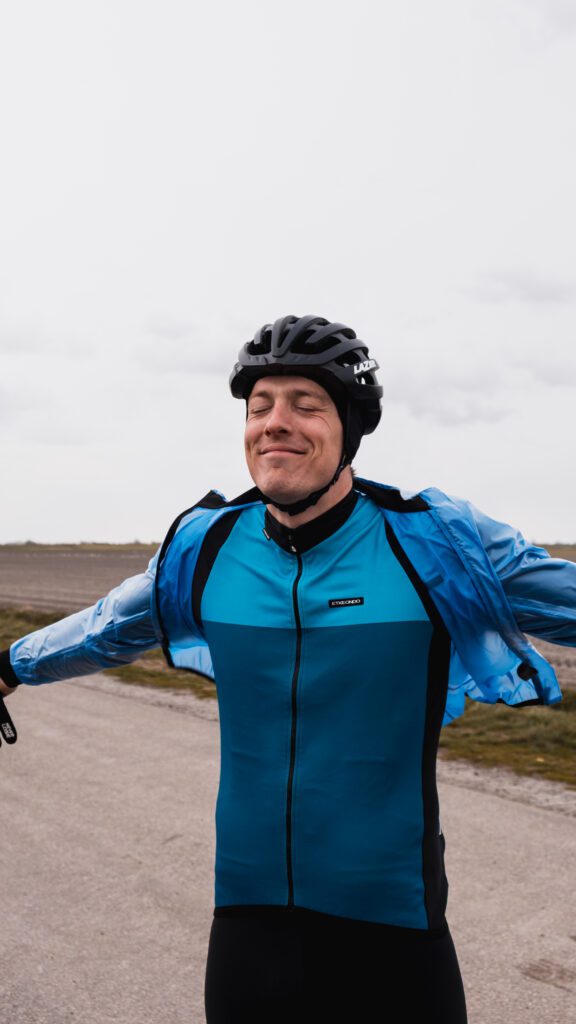
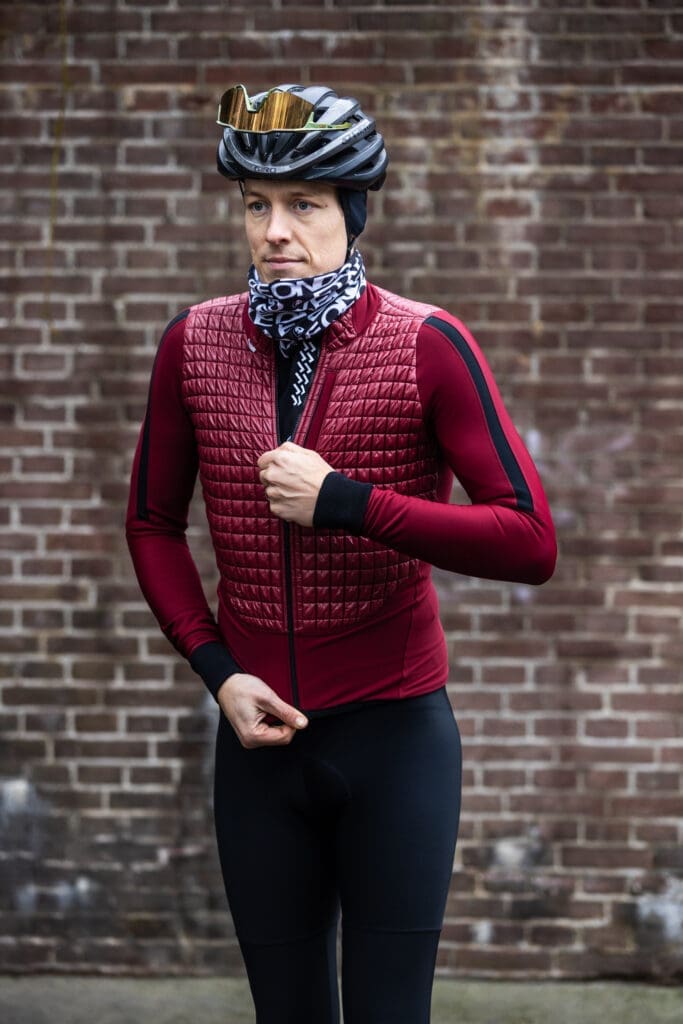
Cardigan/jacket
The combination of a vest with a long-sleeved shirt is something I use quite rarely myself. I'm more of the sleeve pieces. However, it can be a good option if it is a bit changeable and the sun still wants to come through. Then you are just a bit more flexible with, for example, a IBAI shirt (which is also water-repellent) with the Arri vest over it. I myself often ride with the Busti vest, but that is obviously not enough when it is around five degrees.
Socks
Warm feet. Who doesn't want that? In winter, you can no longer arrive with the thin summer socks. So thicker winter socks. Don't think of your grandfather's goat's wool socks, just fine, winter socks like the Bero variant. For both men and women, in different colours. Although keeping your feet warm may be difficult in some conditions, these socks do a lot. Combined with overshoes, you can cycle down to below zero. Just make sure you use lined overshoes.
TIP: if you really suffer from cold feet, you can choose to use heat pads, such as this into your shoes. At least for an hour, extra warm feet!
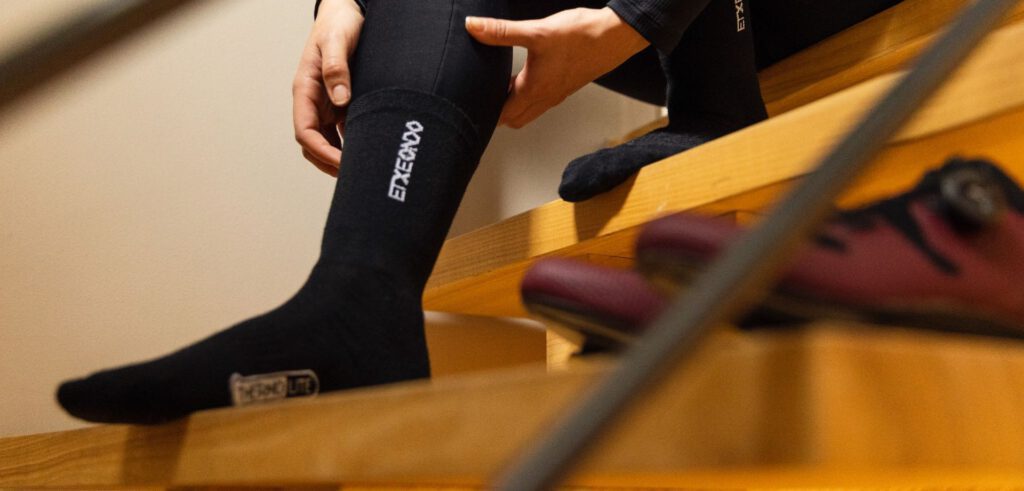
Head and neck
One of the most underrated issues is heat loss through your head. Estimates do vary somewhat, but 20 to 30 per cent of heat leaves your body through your head! So in summer, it is advisable to have a very thin headgear on, so that you can get rid of heat properly. So in winter, it's the exact opposite. Keep that lot inside. I actually use two things to keep my head warm
- A buff, which you can also use as a kind of bandana. It's fine when the temperature is about five degrees. If it gets too hot, you can let it drop down to around your neck, or put it in your back pocket.
- A cap. The skull cap from Etxeondo is a real asset. Super simple to carry, sits comfortably on your head, even with a big head like I have, and it keeps wonderfully warm.
I also use the buff when it is really chilly, around zero to two degrees. Then it's really perfect even when the wind is cutting.
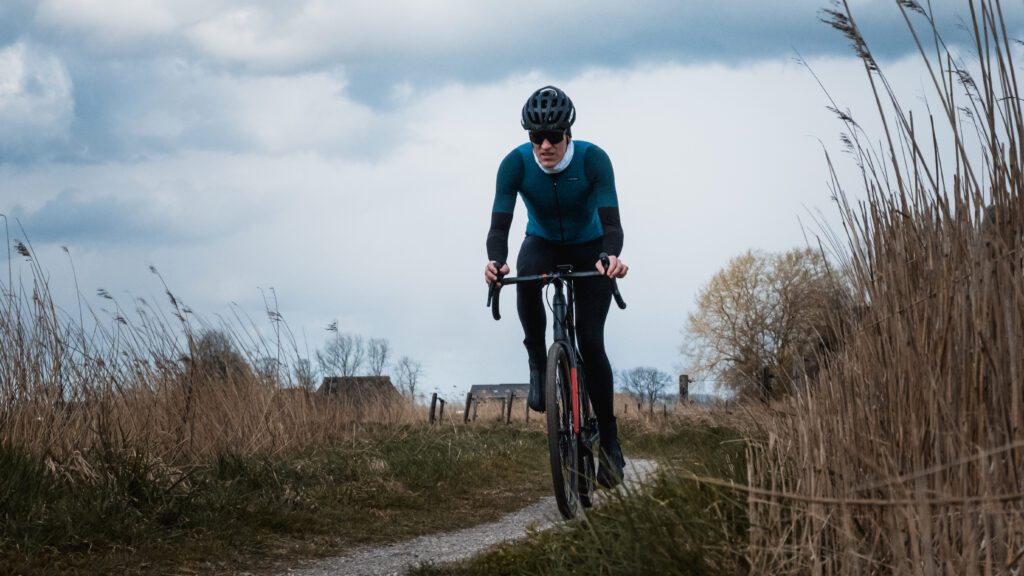
Winter cycling wear guide: rain
When it rains in winter, cycling really isn't as much fun as it used to be. We can know, because in mid-winter, January, we rode a lap Posbank. That was an interesting experience, to say the least. Rain is a killer. You really need water-repellent trousers, a rain jacket (like the shakedry or busti) and, above all, waterproof shoes. Because once your feet get wet, with riding wind, you get frozen feet very quickly. Also, cold hands are not very nice and whatever gloves you put on will get soaking wet. If it drizzles a bit, fine, but with real rain it will be a short ride anyway. Here are some extra tips, in our rainwear article
Extreme cold
Extreme cold, i.e. below zero degrees, need not be a problem for cycling. Keep in mind, though, that your body does not warm up easily. Limit the length of your ride to about 1.5 hours and put on plenty of layers. A buff, warm overshoes, thick socks, thermal shirt, extra undershirt and gloves are then a must. Above all, be alert because once you are too far from home and you have frozen fingers or toes, you can really come home from a cold start.
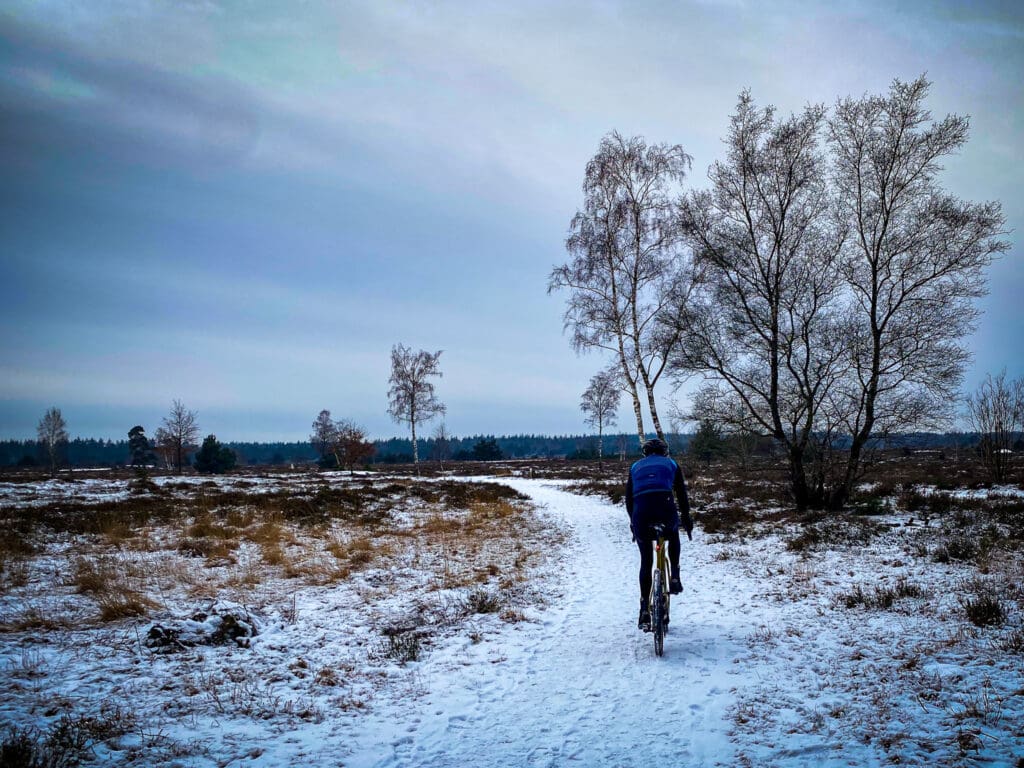
Gloves
Personally, I have a love-hate relationship with gloves. At the cycling club where I was a member, gloves were compulsory at temperatures of six degrees and below. Rightly so, but when I put on real winter gloves, my hands get sweaty at temperatures of five degrees. Then your gloves get wet and yes, that's exactly when you get cold fingers. The Esku from Etxeondo are a nice middle ground. ALs you really ride in wind and weather, even with freezing temperatures, the GARE gloves the go-to pieces. Water-repellent, against the cold. Anything but cooked so.
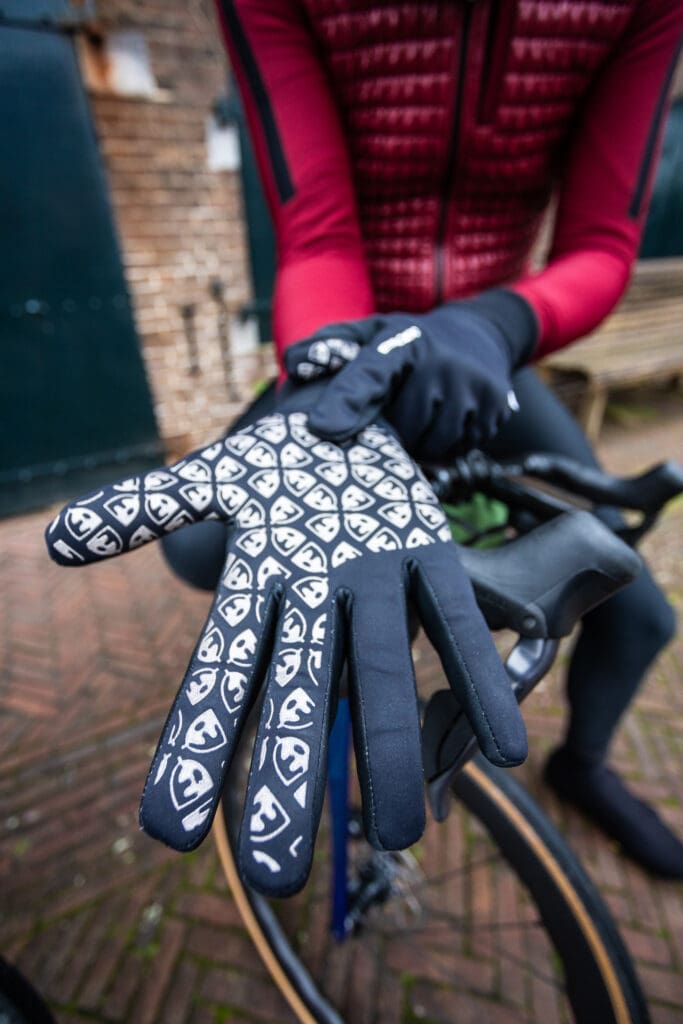

Overshoes
Not unimportant in your wardrobe: overshoes. I personally have two types of overshoes at home:
- Rain covers
- Winter overshoes
The rain covers or rain shoes are only meant to keep out the worst of the water. When it pours, water just comes in through the bottom (and flows down your leg into the shoes as well). So you never keep it completely dry. It may be down to the brand I have at home, but I have never been very enthusiastic about them.
For winter shoes, I have had the same ones for more than 15 years and I love them. Wonderfully warm, lined inside and they repel water. In extreme cold you will have to go inside after 1.5 hours anyway, but in normal winter conditions you get through two to three hours just fine.
